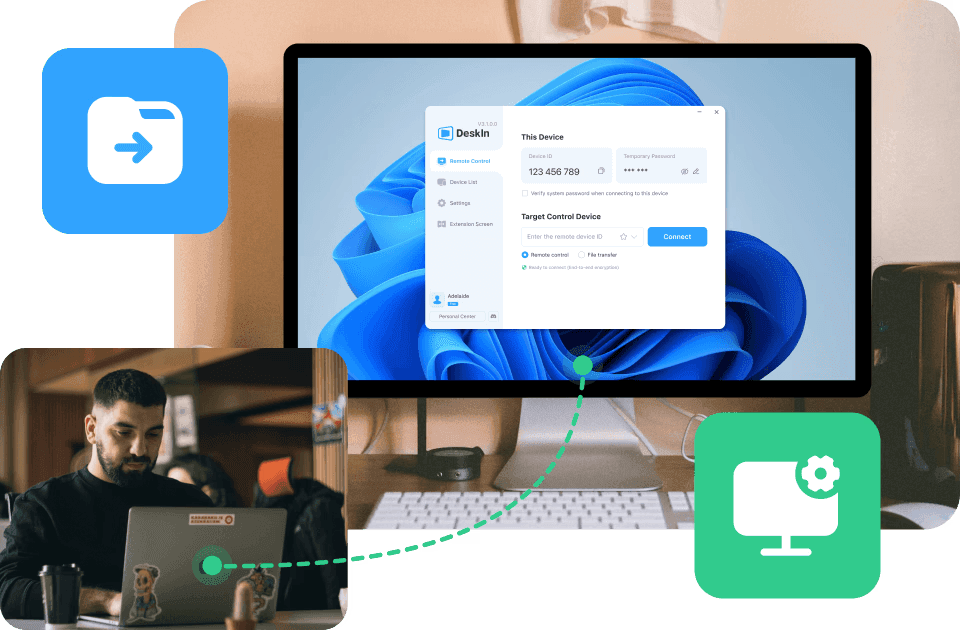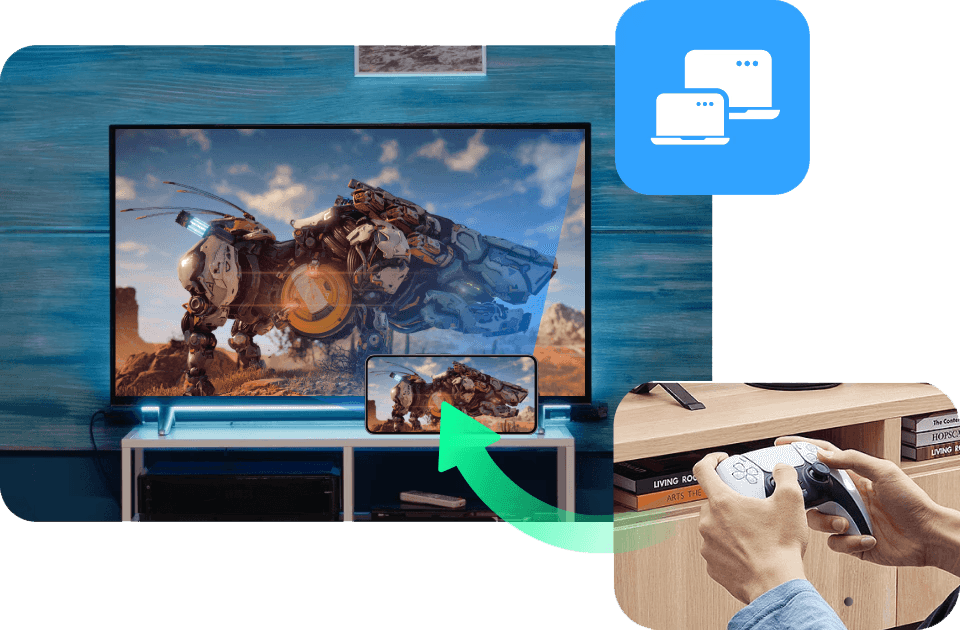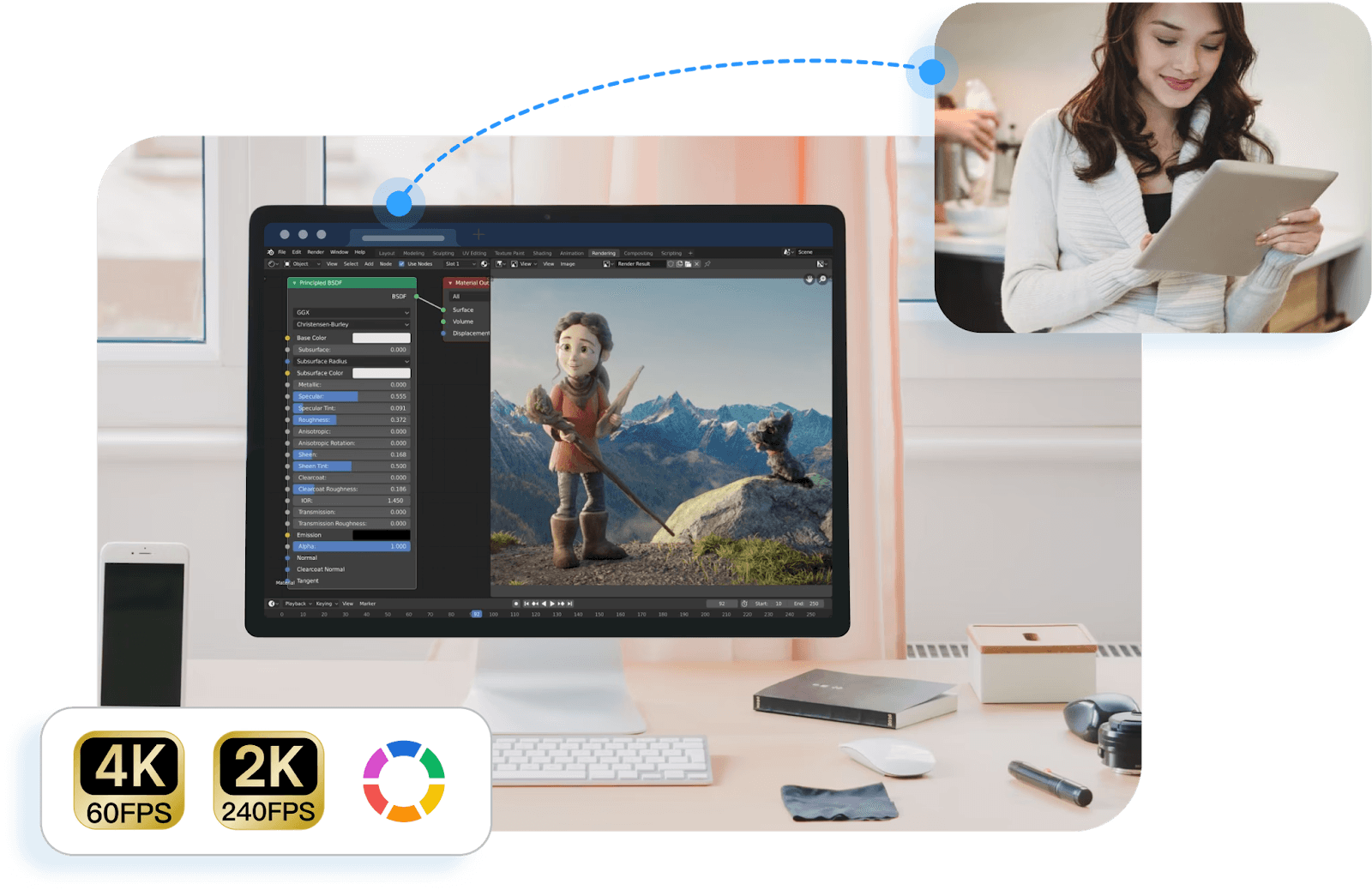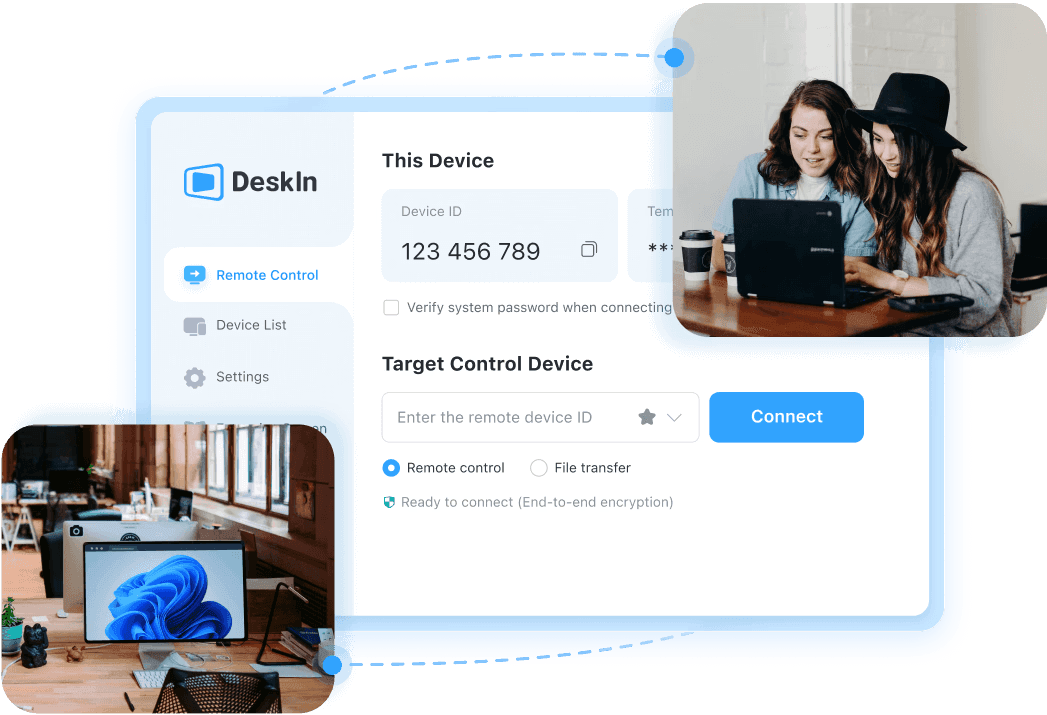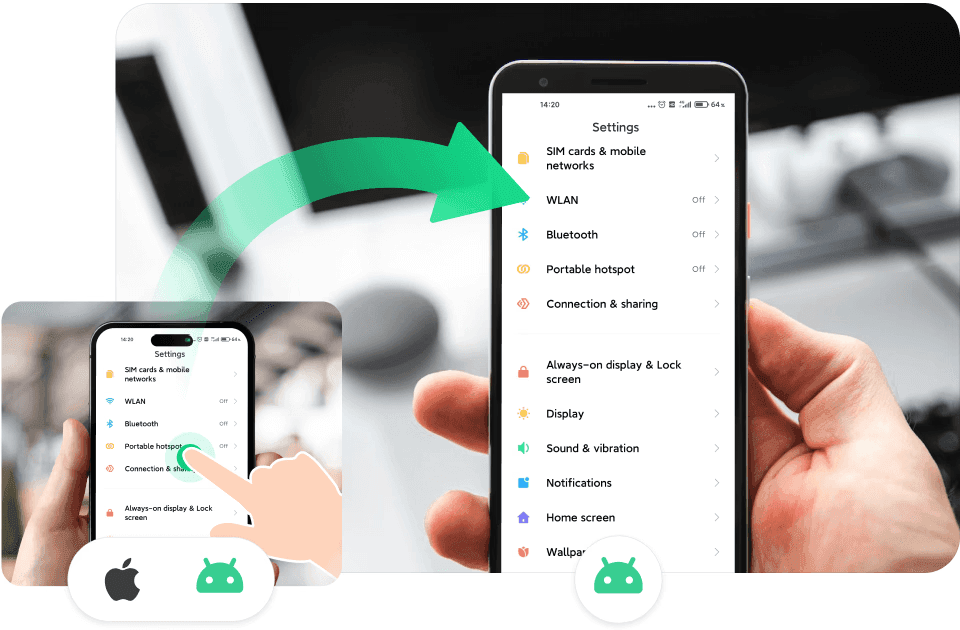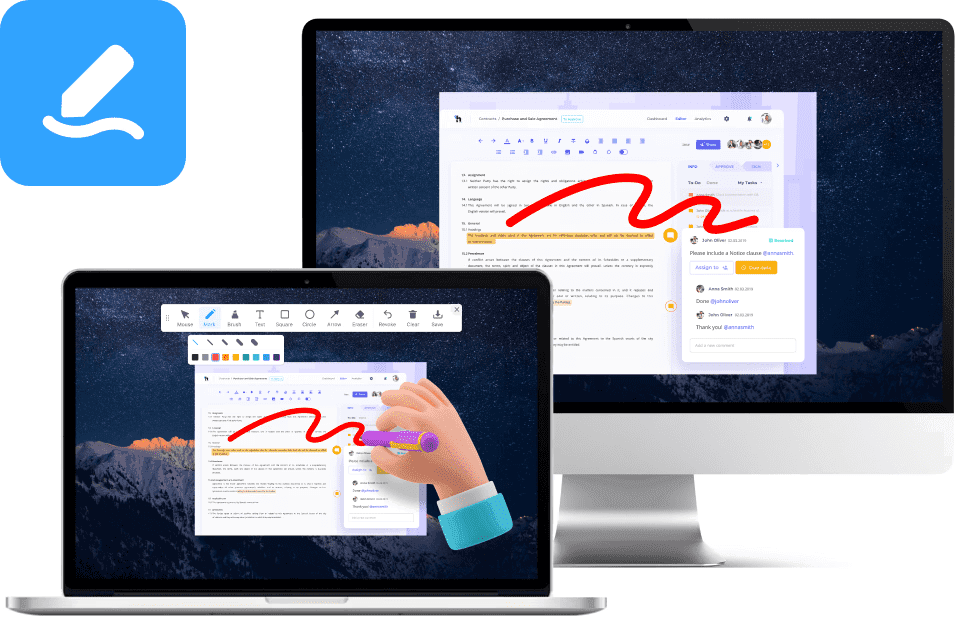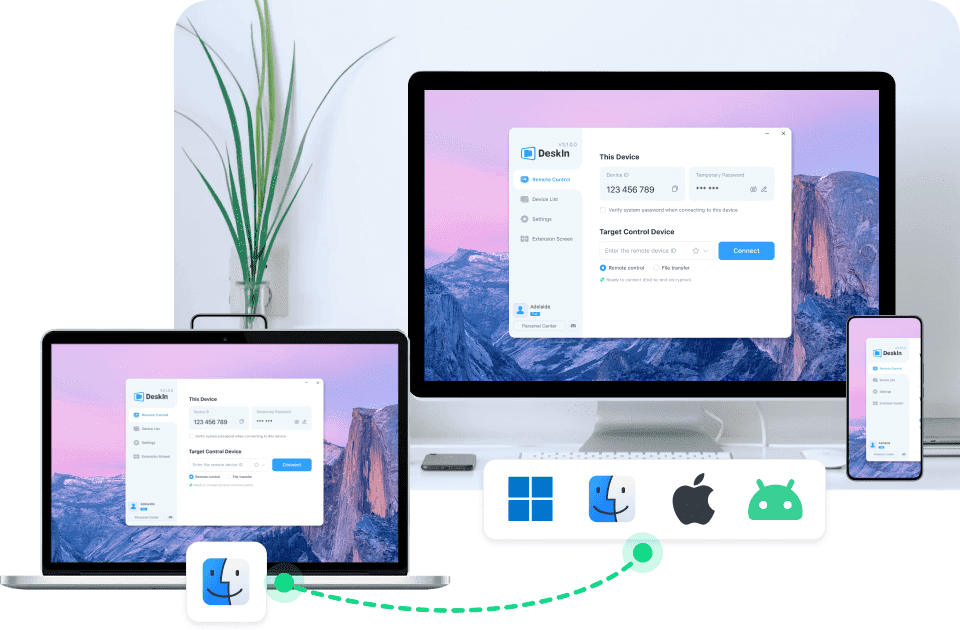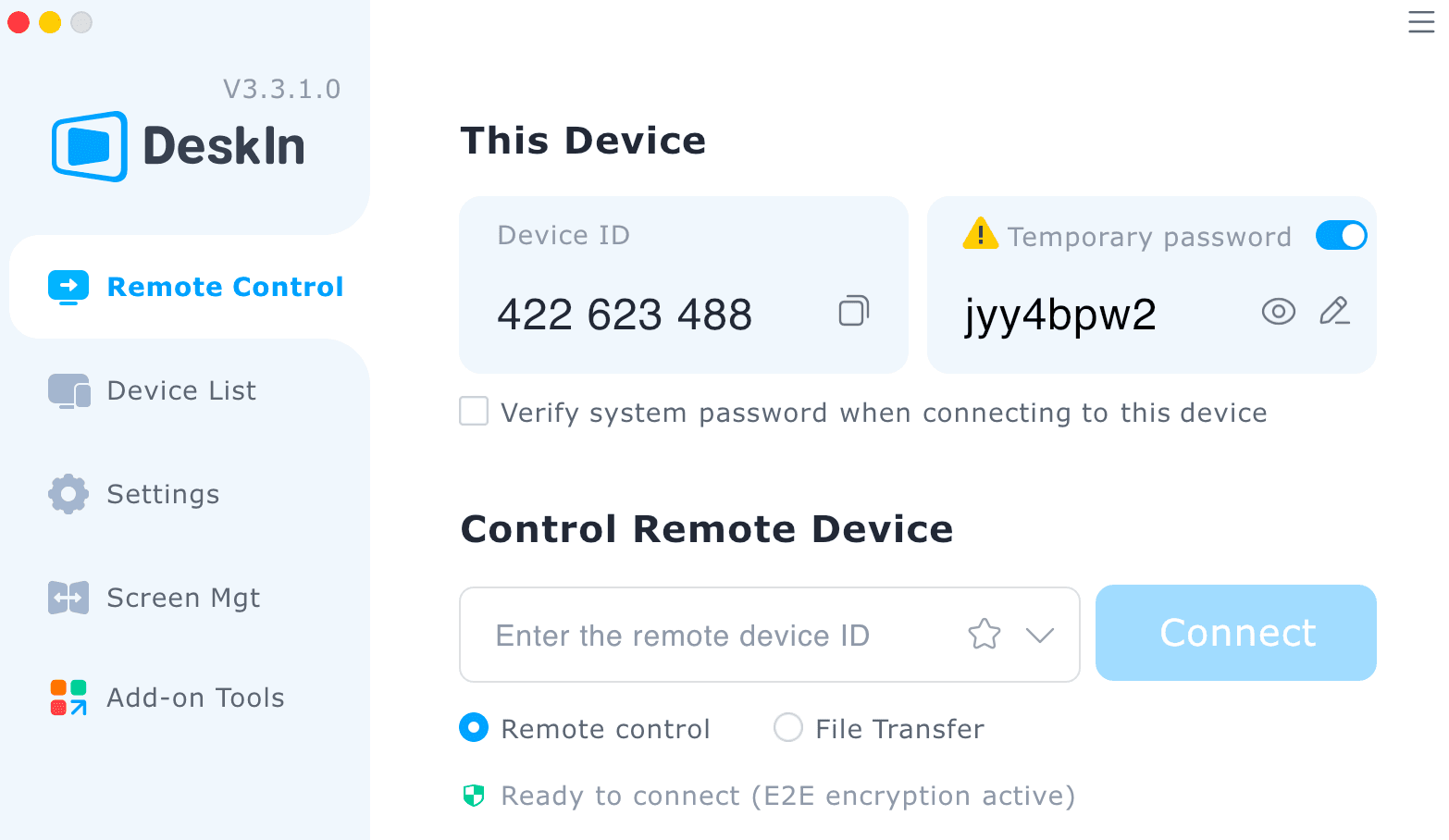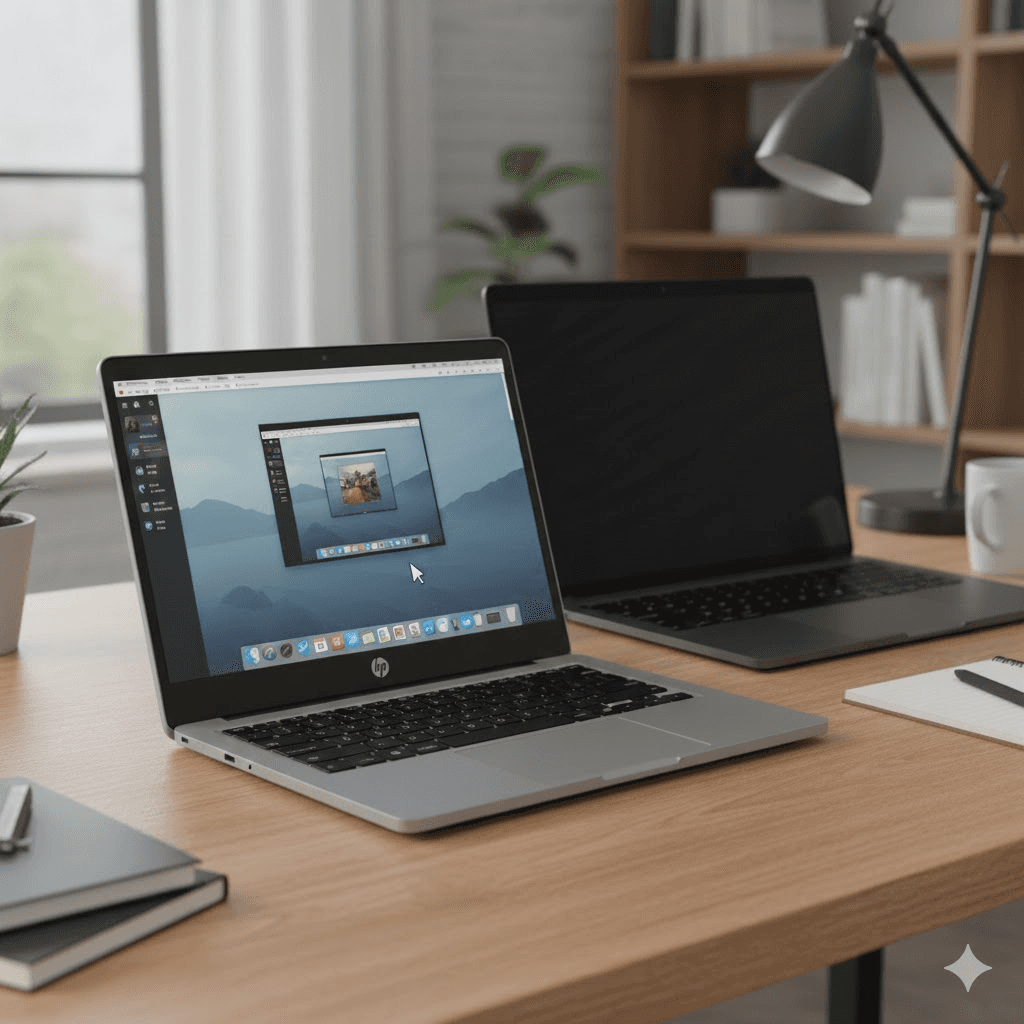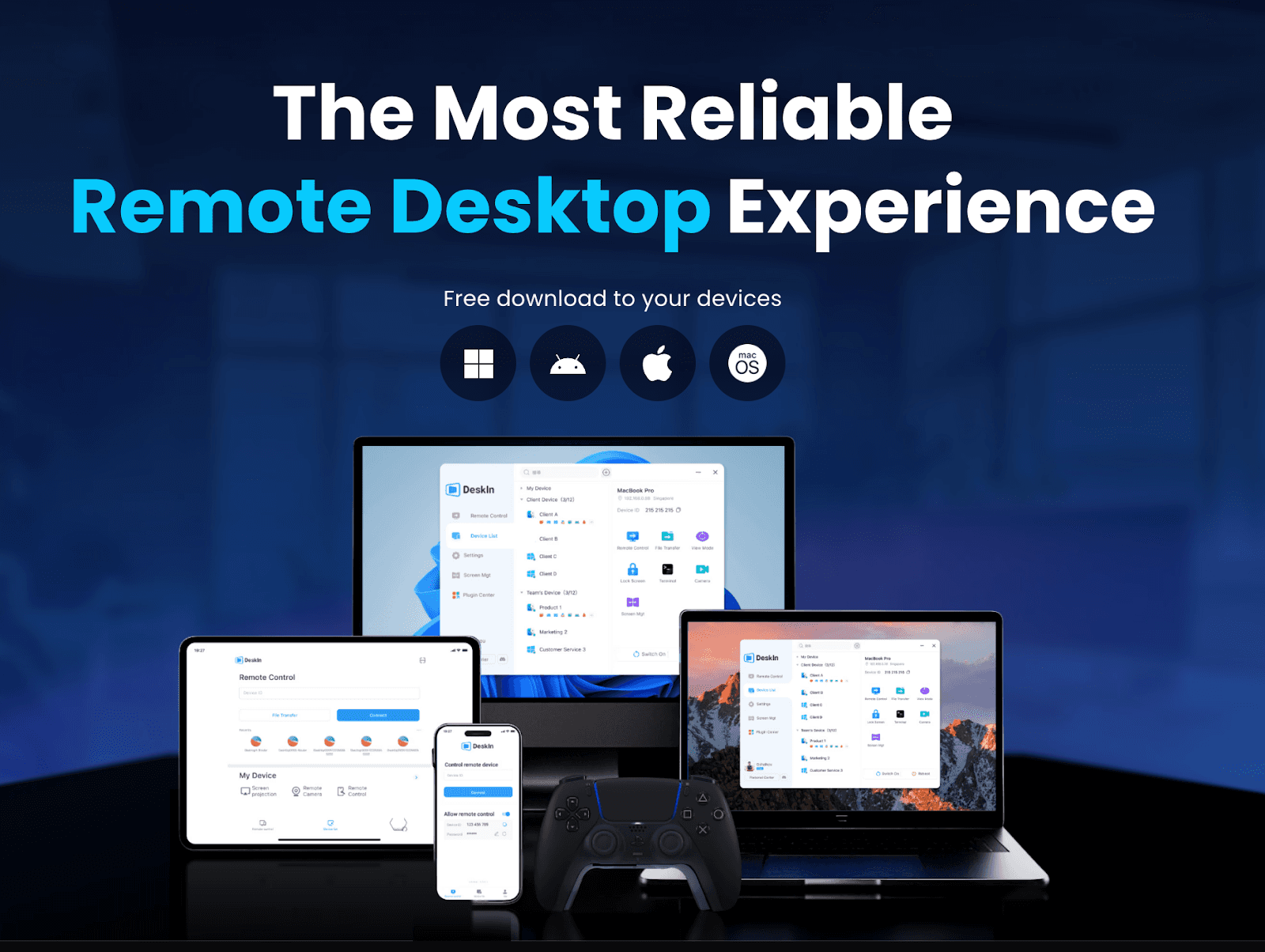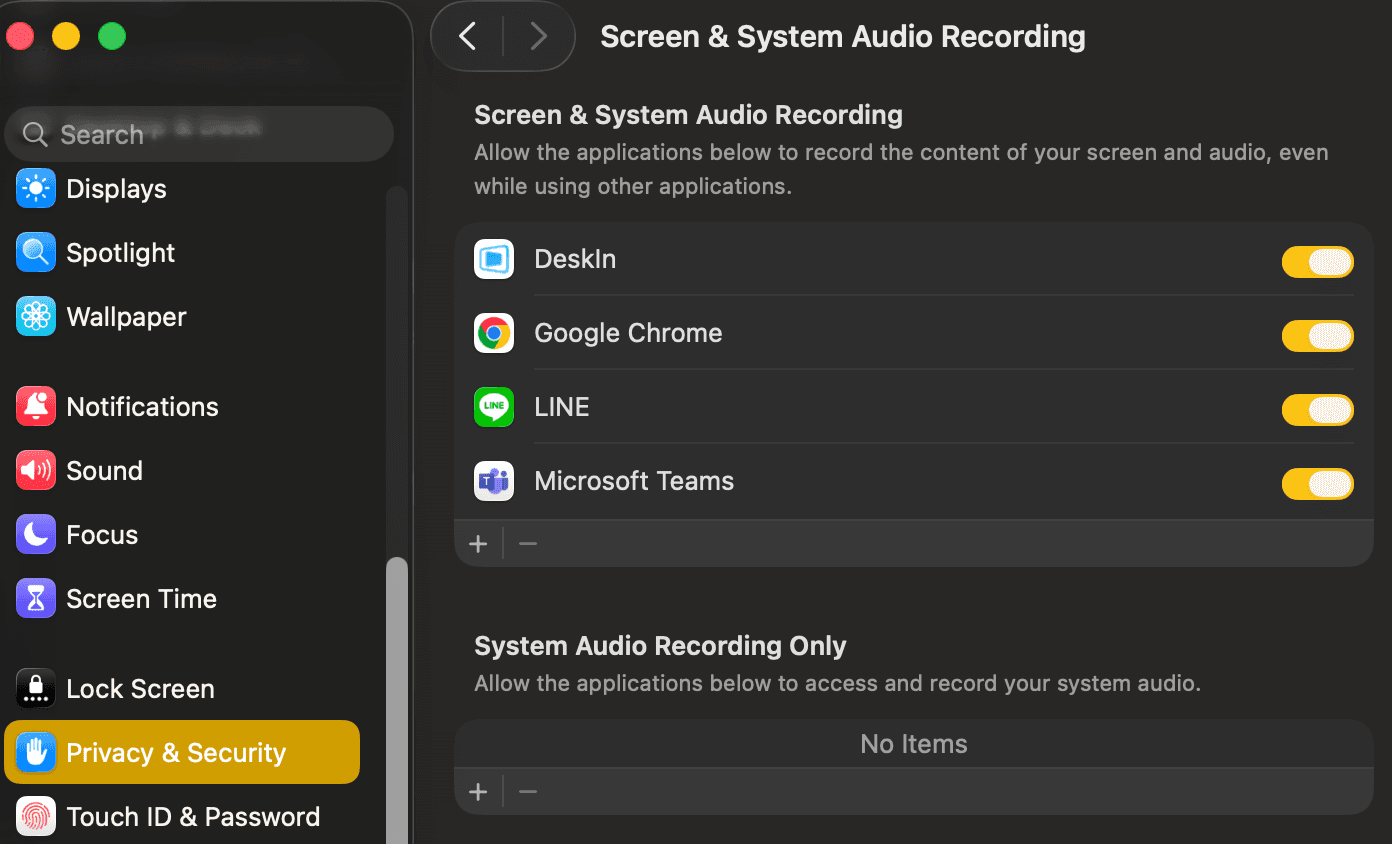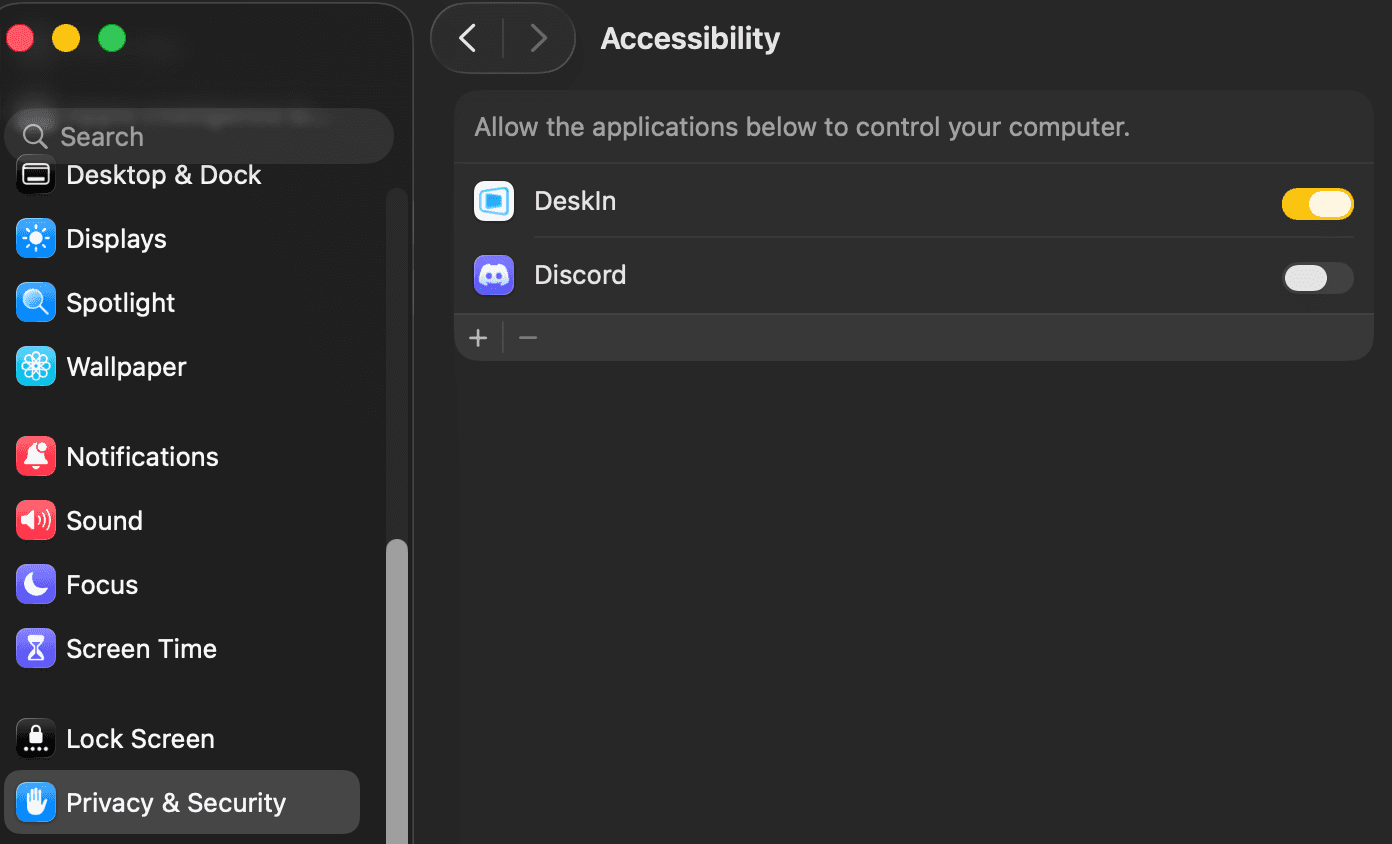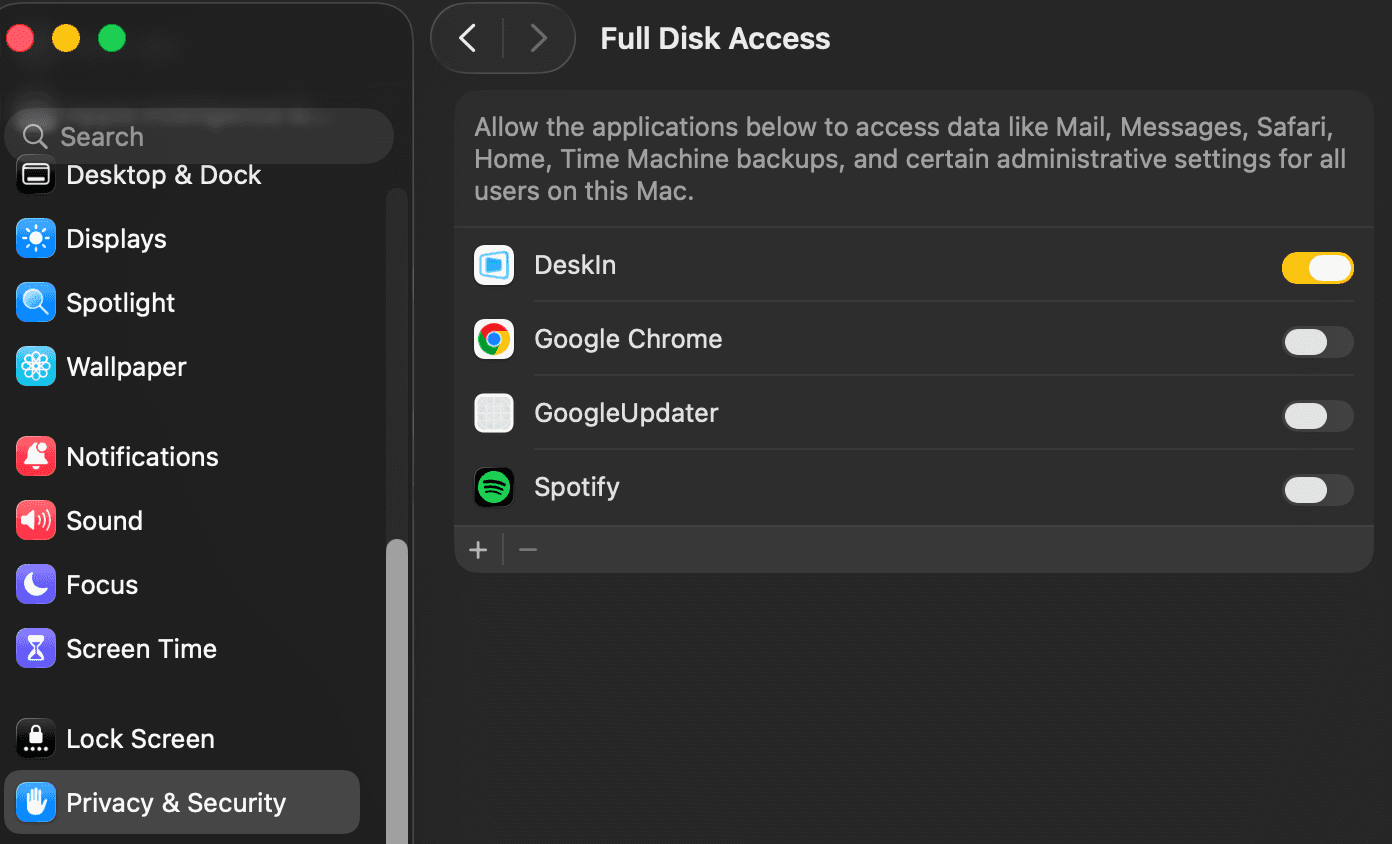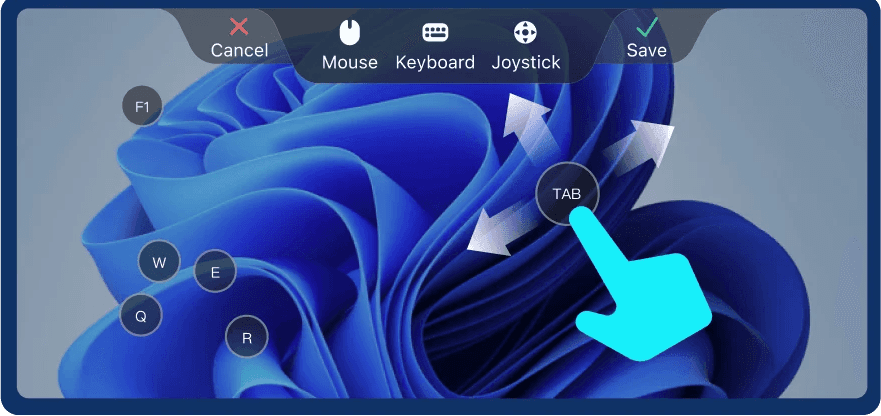Những Ứng Dụng Chiếu Màn Hình Tốt Nhất cho Android và iPhone cho Máy Tính của Bạn
Ngày nay, việc liên tục chuyển đổi giữa các thiết bị có thể không hiệu quả, đặc biệt khi nó liên quan đến các hành động lặp đi lặp lại hoặc chuyển file. Các ứng dụng chiếu màn hình cho phép bạn chiếu màn hình điện thoại, máy tính bảng hoặc máy tính của mình lên một thiết bị khác trong thời gian thực. Dù bạn đang trình bày một bài thuyết trình, chơi game trên màn hình lớn hơn, hay cung cấp hỗ trợ kỹ thuật từ xa, những ứng dụng này cho việc chiếu màn hình rất mạnh mẽ trong sản xuất, giải trí và hợp tác.
Với nhiều ứng dụng có sẵn cho các nền tảng khác nhau, bạn có thể cảm thấy khó khăn trong việc quyết định ứng dụng nào phù hợp nhất với nhu cầu của bạn. Trong hướng dẫn này, chúng tôi đã tổng hợp 6 ứng dụng chiếu màn hình tốt nhất, bao gồm cả tùy chọn miễn phí và trả phí cho Android, iPhone, PC và Mac.
Tổng Quan: Cách Chọn Ứng Dụng Chiếu Màn Hình Tốt Nhất?
Trước khi đi vào các lựa chọn hàng đầu của chúng tôi, điều quan trọng là hiểu điều gì làm cho một ứng dụng chiếu màn hình thực sự hiệu quả. Người dùng khác nhau, dù là sinh viên, người làm việc từ xa, hay game thủ, có những nhu cầu khác nhau, vì vậy đây là những yếu tố chính cần xem xét khi chọn công cụ phù hợp.
Tính tương thích của thiết bị: Không phải tất cả các ứng dụng đều hỗ trợ mọi nền tảng. Một số chỉ dành cho Android hoặc iOS, trong khi những ứng dụng khác cung cấp chiếu chéo giữa nhiều hệ thống. Đảm bảo rằng ứng dụng bạn chọn hoạt động liền mạch với các thiết bị của bạn.
Chất lượng video và độ trễ: Hãy tìm các ứng dụng hỗ trợ độ phân giải cao (như 1080p hoặc thậm chí 4K) và tỉ lệ khung hình lên đến 60FPS cho khả năng phát mượt mà, đặc biệt nếu bạn đang chơi game hoặc phát video. Độ trễ thấp là rất quan trọng cho các tương tác theo thời gian thực.
Tính năng điều khiển: Một số ứng dụng cung cấp chiếu cơ bản, trong khi những ứng dụng khác cho phép điều khiển từ xa, công cụ chú thích hoặc hỗ trợ bàn phím/chuột. Để có thể thao tác chủ động trên thiết bị đã chiếu, bạn sẽ cần một ứng dụng với điều khiển tương tác.
Bảo mật và phương thức kết nối: Một ứng dụng chiếu tốt nên cung cấp mã hóa an toàn và nhiều tùy chọn kết nối, như quét mã QR, truy cập PIN hoặc đăng nhập qua tài khoản. Bonus nếu nó bao gồm các tính năng riêng tư như che màn hình hoặc danh sách trắng thiết bị.
Các phiên bản miễn phí và trả phí: Nhiều ứng dụng cung cấp chức năng giới hạn miễn phí, nhưng các phiên bản trả phí mở khóa độ phân giải tốt hơn, nhiều thiết bị hơn, hoặc các tính năng bổ sung. Hãy xem xét trường hợp sử dụng và ngân sách của bạn trước khi cam kết.
Với những yếu tố này trong tâm trí, hãy cùng khám phá 6 ứng dụng chiếu màn hình hàng đầu nổi bật về cả hiệu suất và khả năng sử dụng.
Top 1. DeskIn
Các Nền Tảng Hỗ Trợ: Windows, macOS, Android, iOS
Phiên Bản Miễn Phí Có Sẵn: Có (miễn phí cho tối đa 3 thiết bị, bao gồm cả sử dụng thương mại)
DeskIn nổi bật như ứng dụng chiếu màn hình tốt nhất cho Android/iPhone đến PC và Mac, nhờ vào khả năng hỗ trợ đa nền tảng, hiệu suất độ nét cao và trải nghiệm chiếu không độ trễ. Nó cho phép bạn chiếu màn hình di động của mình lên máy tính một cách dễ dàng với hỗ trợ cho độ phân giải 4K ở 60FPS và độ trễ dưới 40ms. Đây là một ứng dụng chiếu màn hình mạnh mẽ phục vụ cho sản xuất, giải trí, và thậm chí là các kịch bản hỗ trợ từ xa.
Không chỉ là chiếu màn hình, DeskIn cung cấp các tính năng tương tác nâng cao, như điều khiển từ xa giữa các máy tính xách tay của bạn, mở rộng màn hình thứ hai (biến iPad hoặc điện thoại của bạn thành một màn hình phụ), và thậm chí chức năng camera từ xa. Nó cũng là ứng dụng chiếu màn hình miễn phí tốt nhất cho iPhone, cung cấp bảo mật mạnh mẽ, dễ kết nối (không yêu cầu cùng mạng), và hiệu suất đáng tin cậy ngay cả trong điều kiện mạng kém.

👍 Ưu Điểm:
Chiếu độ nét cao (lên đến 4K 60FPS)
Độ trễ cực thấp, ngay cả qua mạng yếu
Toàn bộ tính năng điều khiển và tương tác từ xa
Hoạt động trên Android, iOS, Windows và macOS
Phiên bản miễn phí hỗ trợ sử dụng thương mại
Nhược Điểm:
Các tính năng nâng cao (ví dụ: điều khiển nhiều thiết bị, màn hình mở rộng) yêu cầu kế hoạch trả phí
Dưới đây là các bước đơn giản để sử dụng DeskIn cho việc giám sát màn hình liền mạch.
Tải xuống và cài đặt DeskIn trên cả điện thoại di động và máy tính của bạn.
Đăng nhập bằng cùng một tài khoản trên cả hai thiết bị của bạn.
Sử dụng "ID thiết bị" và mật khẩu trên thiết bị mục tiêu của bạn để kết nối với thiết bị chủ.
Sau khi kết nối, bạn có thể ngay lập tức chiếu màn hình từ thiết bị di động của mình, và thậm chí tận hưởng nhiều chức năng điều khiển từ xa chuyên nghiệp hơn!

Top 2. Google Home
Các Nền Tảng Hỗ Trợ: Android, iOS, thiết bị hỗ trợ Chromecast, Google Nest Hub
Phiên Bản Miễn Phí Có Sẵn: Có
Google Home là một ứng dụng chiếu màn hình đơn giản và hiệu quả chủ yếu được thiết kế cho người dùng Android muốn phát và chiếu màn hình lên một màn hình hỗ trợ Chromecast hoặc TV thông minh. Là ứng dụng chính thức do Google phát triển, nó đảm bảo việc chiếu không dây ổn định cho các bài thuyết trình, phát video hoặc chia sẻ màn hình không chính thức. Khi được kết nối vào cùng một mạng Wi-Fi, người dùng có thể chiếu toàn bộ màn hình hoặc phát các ứng dụng cụ thể (như YouTube hoặc Google Photos) với thiết lập tối thiểu.
Mặc dù Google Home không cung cấp tính năng điều khiển từ xa hoặc chức năng cấp độ máy tính để bàn như một số công cụ tiên tiến, nhưng nó nổi bật như một ứng dụng chiếu màn hình miễn phí tuyệt vời cho điện thoại và máy tính bảng Android, hoàn hảo cho việc sử dụng hàng ngày trong giải trí tại nhà và giáo dục. Người dùng iPhone cũng có thể sử dụng ứng dụng này, nhưng các tính năng chiếu gốc có giới hạn mà không có các plugin bên thứ ba.

👍 Ưu Điểm:
Miễn phí sử dụng
Chiếu liền mạch đến Chromecast, Nest Hub, hoặc TV thông minh
Đáng tin cậy cho việc chiếu màn hình từ Android ra TV
Hỗ trợ phát âm thanh và video từ các ứng dụng
Nhược Điểm:
Cần tất cả thiết bị phải kết nối cùng một mạng Wi-Fi
Tính tương thích hạn chế với các thiết bị nhận không phải Google hoặc không hỗ trợ Chromecast
Không có tính năng điều khiển từ xa hoặc tương tác với nhiều thiết bị
Top 3. ApowerMirror
Các Nền Tảng Hỗ Trợ: Android, iOS, Windows, macOS, TV
Phiên Bản Miễn Phí Có Sẵn: Có (với các tính năng giới hạn)
ApowerMirror là một ứng dụng chiếu màn hình đa năng hỗ trợ chiếu toàn màn hình từ các thiết bị di động sang PC hoặc TV, cùng với các tính năng điều khiển thêm. Nó lý tưởng cho người dùng đang tìm kiếm không chỉ việc chiếu màn hình mà còn tương tác từ xa theo thời gian thực, chẳng hạn như điều khiển điện thoại Android trực tiếp từ máy tính bằng chuột và bàn phím. Nó hỗ trợ cả kết nối có dây và không dây, mang đến những lựa chọn linh hoạt cho các kịch bản sử dụng khác nhau.
Dù bạn đang trình bày một bài demo di động trong một cuộc họp trực tuyến, hay đơn giản chỉ muốn chiếu iPhone hoặc Android của mình lên màn hình lớn hơn, ApowerMirror cung cấp chất lượng video sắc nét và độ phân giải lên đến 4K (trong phiên bản trả phí). Nó đặc biệt mạnh mẽ như một ứng dụng chiếu màn hình đáng tin cậy, với tính năng ghi màn hình, chú thích, và chế độ game tăng sức hấp dẫn của nó.

👍 Ưu Điểm:
Chiếu chéo nền tảng với tùy chọn điều khiển từ xa
Hỗ trợ độ phân giải HD 4K và ghi màn hình
Tùy chọn kết nối không dây và USB
Phù hợp cho việc giảng dạy, chơi game và sử dụng kinh doanh
Nhược Điểm:
Phiên bản miễn phí có hình mờ
Thỉnh thoảng bị lag khi chiếu không dây độ phân giải cao
Một số tính năng chỉ có sẵn qua các gói trả phí
Top 4. LetsView
Các Nền Tảng Hỗ Trợ: Android, iOS, Windows, macOS, Smart TV
Phiên Bản Miễn Phí Có Sẵn: Có
LetsView là một ứng dụng chiếu màn hình miễn phí mang đến khả năng chiếu không dây trên gần như tất cả các nền tảng lớn. Nó hỗ trợ chiếu màn hình từ Android hoặc iPhone lên PC, Mac, hoặc thậm chí một TV thông minh, không cần cáp. Điều làm LetsView nổi bật là giao diện thân thiện với người dùng, bảng trắng tích hợp và công cụ ghi màn hình, khiến nó trở thành lựa chọn mạnh mẽ cho giảng dạy từ xa, các buổi đào tạo và các cuộc họp hợp tác.
Không chỉ miễn phí, LetsView cung cấp trải nghiệm chiếu đáng ngạc nhiên với chất lượng hình ảnh tốt và độ trễ thấp. Mặc dù nó không cung cấp điều khiển nâng cao như đầu vào cảm ứng từ xa hay tùy chọn độ phân giải cao như 4K, nhưng nó là sự chọn lựa vững chắc cho nhu cầu chiếu hàng ngày. Nếu bạn muốn một ứng dụng chiếu màn hình miễn phí cho iPhone hoặc Android mà không có giới hạn tính năng, LetsView thật sự khó đánh bại.

👍 Ưu Điểm:
Miễn phí sử dụng, không có hình mờ hoặc chi phí ẩn
Kết nối không dây qua mã QR, PIN hoặc tự động phát hiện
Bao gồm các tính năng ghi màn hình, chú thích và bảng trắng
Cài đặt dễ dàng trên nhiều nền tảng
Nhược Điểm:
Không có khả năng điều khiển từ xa
Độ phân giải và tỉ lệ khung hình hạn chế so với các công cụ cao cấp
Thỉnh thoảng không ổn định trên mạng Wi-Fi kém
Top 5. AirDroid Cast
Các Nền Tảng Hỗ Trợ: Android, iOS, Windows, macOS, Trình duyệt web
Phiên Bản Miễn Phí Có Sẵn: Có (các tính năng hạn chế)
AirDroid Cast là một ứng dụng giám sát màn hình đa chức năng hỗ trợ việc chiếu từ Android hoặc iPhone sang máy tính, Mac, hoặc thậm chí qua trình duyệt web, không cần cài đặt trên thiết bị nhận. Nó cung cấp cả chiếu cục bộ và từ xa, làm cho nó hoàn hảo cho những người dùng muốn chiếu màn hình di động của mình lên máy tính để trình bày, demo, hoặc các quy trình làm việc đa nhiệm.
Một lợi thế chính của AirDroid Cast là khả năng điều khiển từ xa, cho phép người dùng điều khiển điện thoại di động của mình từ PC sau khi đã chiếu (cần cáp USB cho iOS). Nó cũng hỗ trợ âm thanh hai chiều, làm cho nó trở thành một lựa chọn tuyệt vời cho việc dạy học trực tuyến và giao tiếp theo thời gian thực. Mặc dù phiên bản miễn phí của nó có một số hạn chế (như thời gian phiên và ít tính năng hơn), nhưng hiệu suất tổng thể rất ổn định và mượt mà.

👍 Ưu Điểm:
Hỗ trợ cả việc chiếu màn hình cục bộ và từ xa
Chạy chéo nền tảng và hoạt động qua trình duyệt
Cho phép điều khiển từ xa các thiết bị di động từ PC
Giao diện sạch sẽ và hiệu suất độ trễ thấp
Nhược Điểm:
Một số tính năng (ví dụ: điều khiển từ xa hoặc phiên mở rộng) yêu cầu nâng cấp phiên bản trả phí
Điều khiển từ xa trên iOS cần kết nối USB
Kế hoạch miễn phí giới hạn thời gian sử dụng và truy cập
Top 6. iPhone Mirroring
Các Nền Tảng Hỗ Trợ: iOS (iPhone/iPad) đến Windows, Mac
Phiên Bản Miễn Phí Có Sẵn: Có
iPhone Mirroring là một ứng dụng chiếu màn hình nhẹ được phát triển đặc biệt cho người dùng iPhone và iPad muốn phát màn hình của họ lên máy tính. Nó có tính năng chia sẻ màn hình không dây nhanh chóng qua AirPlay, làm cho nó trở thành một lựa chọn plug-and-play mà không cần cáp hoặc thiết lập phức tạp. Dù bạn đang chia sẻ phương tiện, minh họa các ứng dụng, hay phát trực tiếp gameplay, nó mang lại hiệu suất mượt mà với độ trễ tối thiểu.
Điều làm iPhone Mirroring khác biệt là tính tương thích cao với hệ sinh thái của Apple, cho phép bạn dễ dàng chiếu màn hình iPhone/iPad của bạn trên máy tính Mac. Nó cũng hỗ trợ độ phân giải HD và các công cụ điều khiển đơn giản hơn cho trải nghiệm trình bày tốt hơn. Trong khi nó thiếu các tính năng nâng cao như điều khiển từ xa, tính dễ sử dụng của nó khiến nó trở thành một ứng viên mạnh mẽ cho người dùng thông thường.

👍 Ưu Điểm:
Được tối ưu hóa cho người dùng iOS
Kết nối không dây qua AirPlay
Tương thích với cả Windows và macOS
Giao diện đơn giản và sạch sẽ
Nhược Điểm:
Có yêu cầu hệ thống và chip cho thiết bị Mac và iOS
Chức năng hạn chế so với các bộ công cụ chiếu toàn diện
Có thể phụ thuộc vào độ ổn định Wi-Fi để đạt hiệu suất tốt nhất
So Sánh: Những Ứng Dụng Chiếu Màn Hình Tốt Nhất Trong Nháy Mắt
Vẫn không chắc chắn ứng dụng chiếu màn hình nào là phù hợp với bạn? Dưới đây là bảng so sánh song song giữa các lựa chọn hàng đầu để giúp bạn đưa ra quyết định thông minh.
Ứng Dụng | Hỗ Trợ Nền Tảng | Chất Lượng Video | Điều Khiển Từ Xa | Phiên Bản Miễn Phí |
DeskIn | Android, iPhone, Windows, macOS | Lên đến 4K 60FPS | ✅ Có | ✅ Có |
Google Home | Android → Chromecast / TV Thông Minh | Lên đến 1080p | ❌ Không | ✅ Có |
ApowerMirror | Android, iPhone, Windows, macOS | Lên đến 2K | ✅ Có | ✅ Giới hạn |
LetsView | Android, iPhone, Windows, macOS | 1080p (ổn định) | ❌ Không | ✅ Có |
AirDroid Cast | Android, iPhone, Windows, macOS | HD / 4K (trả phí) | ✅ Có | ✅ Giới hạn |
iPhone Mirroring | iPhone → Windows/macOS | Lên đến 1080p | ❌ Không | ✅ Có |
Kết Luận Cuối Cùng: Ứng Dụng Chiếu Màn Hình Tốt Nhất Là Gì?
Việc chọn ứng dụng chiếu màn hình tốt nhất cuối cùng phụ thuộc vào nhu cầu cụ thể của bạn, cho dù đó là chiếu liền mạch từ Android đến PC, hiển thị độ phân giải cao, hay các tính năng điều khiển từ xa. Đối với việc chiếu màn hình cơ bản, các công cụ như Google Home hoặc LetsView là đơn giản và hiệu quả. Nếu bạn cần các tính năng nâng cao như hỗ trợ đa nền tảng và điều khiển thiết bị theo thời gian thực, các tùy chọn trả phí như ApowerMirror hoặc AirDroid Cast có thể đáng để xem xét.
Tuy nhiên, nếu bạn đang tìm kiếm sự cân bằng giữa sức mạnh, hiệu suất, và giá cả, DeskIn nổi bật như một đề xuất hàng đầu. Nó cung cấp trải nghiệm chiếu 4K chất lượng, điều khiển từ xa, và tương thích với đa nền tảng, tất cả đều miễn phí, làm cho nó trở thành ứng dụng chiếu màn hình tốt nhất cho Android đến PC và iPhone đến máy tính để bàn. Dù bạn là người dùng thông thường hay một chuyên gia, DeskIn đáp ứng mọi nhu cầu mà không có sự thỏa hiệp.
Những Ứng Dụng Chiếu Màn Hình Tốt Nhất cho Android và iPhone cho Máy Tính của Bạn
Ngày nay, việc liên tục chuyển đổi giữa các thiết bị có thể không hiệu quả, đặc biệt khi nó liên quan đến các hành động lặp đi lặp lại hoặc chuyển file. Các ứng dụng chiếu màn hình cho phép bạn chiếu màn hình điện thoại, máy tính bảng hoặc máy tính của mình lên một thiết bị khác trong thời gian thực. Dù bạn đang trình bày một bài thuyết trình, chơi game trên màn hình lớn hơn, hay cung cấp hỗ trợ kỹ thuật từ xa, những ứng dụng này cho việc chiếu màn hình rất mạnh mẽ trong sản xuất, giải trí và hợp tác.
Với nhiều ứng dụng có sẵn cho các nền tảng khác nhau, bạn có thể cảm thấy khó khăn trong việc quyết định ứng dụng nào phù hợp nhất với nhu cầu của bạn. Trong hướng dẫn này, chúng tôi đã tổng hợp 6 ứng dụng chiếu màn hình tốt nhất, bao gồm cả tùy chọn miễn phí và trả phí cho Android, iPhone, PC và Mac.
Tổng Quan: Cách Chọn Ứng Dụng Chiếu Màn Hình Tốt Nhất?
Trước khi đi vào các lựa chọn hàng đầu của chúng tôi, điều quan trọng là hiểu điều gì làm cho một ứng dụng chiếu màn hình thực sự hiệu quả. Người dùng khác nhau, dù là sinh viên, người làm việc từ xa, hay game thủ, có những nhu cầu khác nhau, vì vậy đây là những yếu tố chính cần xem xét khi chọn công cụ phù hợp.
Tính tương thích của thiết bị: Không phải tất cả các ứng dụng đều hỗ trợ mọi nền tảng. Một số chỉ dành cho Android hoặc iOS, trong khi những ứng dụng khác cung cấp chiếu chéo giữa nhiều hệ thống. Đảm bảo rằng ứng dụng bạn chọn hoạt động liền mạch với các thiết bị của bạn.
Chất lượng video và độ trễ: Hãy tìm các ứng dụng hỗ trợ độ phân giải cao (như 1080p hoặc thậm chí 4K) và tỉ lệ khung hình lên đến 60FPS cho khả năng phát mượt mà, đặc biệt nếu bạn đang chơi game hoặc phát video. Độ trễ thấp là rất quan trọng cho các tương tác theo thời gian thực.
Tính năng điều khiển: Một số ứng dụng cung cấp chiếu cơ bản, trong khi những ứng dụng khác cho phép điều khiển từ xa, công cụ chú thích hoặc hỗ trợ bàn phím/chuột. Để có thể thao tác chủ động trên thiết bị đã chiếu, bạn sẽ cần một ứng dụng với điều khiển tương tác.
Bảo mật và phương thức kết nối: Một ứng dụng chiếu tốt nên cung cấp mã hóa an toàn và nhiều tùy chọn kết nối, như quét mã QR, truy cập PIN hoặc đăng nhập qua tài khoản. Bonus nếu nó bao gồm các tính năng riêng tư như che màn hình hoặc danh sách trắng thiết bị.
Các phiên bản miễn phí và trả phí: Nhiều ứng dụng cung cấp chức năng giới hạn miễn phí, nhưng các phiên bản trả phí mở khóa độ phân giải tốt hơn, nhiều thiết bị hơn, hoặc các tính năng bổ sung. Hãy xem xét trường hợp sử dụng và ngân sách của bạn trước khi cam kết.
Với những yếu tố này trong tâm trí, hãy cùng khám phá 6 ứng dụng chiếu màn hình hàng đầu nổi bật về cả hiệu suất và khả năng sử dụng.
Top 1. DeskIn
Các Nền Tảng Hỗ Trợ: Windows, macOS, Android, iOS
Phiên Bản Miễn Phí Có Sẵn: Có (miễn phí cho tối đa 3 thiết bị, bao gồm cả sử dụng thương mại)
DeskIn nổi bật như ứng dụng chiếu màn hình tốt nhất cho Android/iPhone đến PC và Mac, nhờ vào khả năng hỗ trợ đa nền tảng, hiệu suất độ nét cao và trải nghiệm chiếu không độ trễ. Nó cho phép bạn chiếu màn hình di động của mình lên máy tính một cách dễ dàng với hỗ trợ cho độ phân giải 4K ở 60FPS và độ trễ dưới 40ms. Đây là một ứng dụng chiếu màn hình mạnh mẽ phục vụ cho sản xuất, giải trí, và thậm chí là các kịch bản hỗ trợ từ xa.
Không chỉ là chiếu màn hình, DeskIn cung cấp các tính năng tương tác nâng cao, như điều khiển từ xa giữa các máy tính xách tay của bạn, mở rộng màn hình thứ hai (biến iPad hoặc điện thoại của bạn thành một màn hình phụ), và thậm chí chức năng camera từ xa. Nó cũng là ứng dụng chiếu màn hình miễn phí tốt nhất cho iPhone, cung cấp bảo mật mạnh mẽ, dễ kết nối (không yêu cầu cùng mạng), và hiệu suất đáng tin cậy ngay cả trong điều kiện mạng kém.

👍 Ưu Điểm:
Chiếu độ nét cao (lên đến 4K 60FPS)
Độ trễ cực thấp, ngay cả qua mạng yếu
Toàn bộ tính năng điều khiển và tương tác từ xa
Hoạt động trên Android, iOS, Windows và macOS
Phiên bản miễn phí hỗ trợ sử dụng thương mại
Nhược Điểm:
Các tính năng nâng cao (ví dụ: điều khiển nhiều thiết bị, màn hình mở rộng) yêu cầu kế hoạch trả phí
Dưới đây là các bước đơn giản để sử dụng DeskIn cho việc giám sát màn hình liền mạch.
Tải xuống và cài đặt DeskIn trên cả điện thoại di động và máy tính của bạn.
Đăng nhập bằng cùng một tài khoản trên cả hai thiết bị của bạn.
Sử dụng "ID thiết bị" và mật khẩu trên thiết bị mục tiêu của bạn để kết nối với thiết bị chủ.
Sau khi kết nối, bạn có thể ngay lập tức chiếu màn hình từ thiết bị di động của mình, và thậm chí tận hưởng nhiều chức năng điều khiển từ xa chuyên nghiệp hơn!

Top 2. Google Home
Các Nền Tảng Hỗ Trợ: Android, iOS, thiết bị hỗ trợ Chromecast, Google Nest Hub
Phiên Bản Miễn Phí Có Sẵn: Có
Google Home là một ứng dụng chiếu màn hình đơn giản và hiệu quả chủ yếu được thiết kế cho người dùng Android muốn phát và chiếu màn hình lên một màn hình hỗ trợ Chromecast hoặc TV thông minh. Là ứng dụng chính thức do Google phát triển, nó đảm bảo việc chiếu không dây ổn định cho các bài thuyết trình, phát video hoặc chia sẻ màn hình không chính thức. Khi được kết nối vào cùng một mạng Wi-Fi, người dùng có thể chiếu toàn bộ màn hình hoặc phát các ứng dụng cụ thể (như YouTube hoặc Google Photos) với thiết lập tối thiểu.
Mặc dù Google Home không cung cấp tính năng điều khiển từ xa hoặc chức năng cấp độ máy tính để bàn như một số công cụ tiên tiến, nhưng nó nổi bật như một ứng dụng chiếu màn hình miễn phí tuyệt vời cho điện thoại và máy tính bảng Android, hoàn hảo cho việc sử dụng hàng ngày trong giải trí tại nhà và giáo dục. Người dùng iPhone cũng có thể sử dụng ứng dụng này, nhưng các tính năng chiếu gốc có giới hạn mà không có các plugin bên thứ ba.

👍 Ưu Điểm:
Miễn phí sử dụng
Chiếu liền mạch đến Chromecast, Nest Hub, hoặc TV thông minh
Đáng tin cậy cho việc chiếu màn hình từ Android ra TV
Hỗ trợ phát âm thanh và video từ các ứng dụng
Nhược Điểm:
Cần tất cả thiết bị phải kết nối cùng một mạng Wi-Fi
Tính tương thích hạn chế với các thiết bị nhận không phải Google hoặc không hỗ trợ Chromecast
Không có tính năng điều khiển từ xa hoặc tương tác với nhiều thiết bị
Top 3. ApowerMirror
Các Nền Tảng Hỗ Trợ: Android, iOS, Windows, macOS, TV
Phiên Bản Miễn Phí Có Sẵn: Có (với các tính năng giới hạn)
ApowerMirror là một ứng dụng chiếu màn hình đa năng hỗ trợ chiếu toàn màn hình từ các thiết bị di động sang PC hoặc TV, cùng với các tính năng điều khiển thêm. Nó lý tưởng cho người dùng đang tìm kiếm không chỉ việc chiếu màn hình mà còn tương tác từ xa theo thời gian thực, chẳng hạn như điều khiển điện thoại Android trực tiếp từ máy tính bằng chuột và bàn phím. Nó hỗ trợ cả kết nối có dây và không dây, mang đến những lựa chọn linh hoạt cho các kịch bản sử dụng khác nhau.
Dù bạn đang trình bày một bài demo di động trong một cuộc họp trực tuyến, hay đơn giản chỉ muốn chiếu iPhone hoặc Android của mình lên màn hình lớn hơn, ApowerMirror cung cấp chất lượng video sắc nét và độ phân giải lên đến 4K (trong phiên bản trả phí). Nó đặc biệt mạnh mẽ như một ứng dụng chiếu màn hình đáng tin cậy, với tính năng ghi màn hình, chú thích, và chế độ game tăng sức hấp dẫn của nó.

👍 Ưu Điểm:
Chiếu chéo nền tảng với tùy chọn điều khiển từ xa
Hỗ trợ độ phân giải HD 4K và ghi màn hình
Tùy chọn kết nối không dây và USB
Phù hợp cho việc giảng dạy, chơi game và sử dụng kinh doanh
Nhược Điểm:
Phiên bản miễn phí có hình mờ
Thỉnh thoảng bị lag khi chiếu không dây độ phân giải cao
Một số tính năng chỉ có sẵn qua các gói trả phí
Top 4. LetsView
Các Nền Tảng Hỗ Trợ: Android, iOS, Windows, macOS, Smart TV
Phiên Bản Miễn Phí Có Sẵn: Có
LetsView là một ứng dụng chiếu màn hình miễn phí mang đến khả năng chiếu không dây trên gần như tất cả các nền tảng lớn. Nó hỗ trợ chiếu màn hình từ Android hoặc iPhone lên PC, Mac, hoặc thậm chí một TV thông minh, không cần cáp. Điều làm LetsView nổi bật là giao diện thân thiện với người dùng, bảng trắng tích hợp và công cụ ghi màn hình, khiến nó trở thành lựa chọn mạnh mẽ cho giảng dạy từ xa, các buổi đào tạo và các cuộc họp hợp tác.
Không chỉ miễn phí, LetsView cung cấp trải nghiệm chiếu đáng ngạc nhiên với chất lượng hình ảnh tốt và độ trễ thấp. Mặc dù nó không cung cấp điều khiển nâng cao như đầu vào cảm ứng từ xa hay tùy chọn độ phân giải cao như 4K, nhưng nó là sự chọn lựa vững chắc cho nhu cầu chiếu hàng ngày. Nếu bạn muốn một ứng dụng chiếu màn hình miễn phí cho iPhone hoặc Android mà không có giới hạn tính năng, LetsView thật sự khó đánh bại.

👍 Ưu Điểm:
Miễn phí sử dụng, không có hình mờ hoặc chi phí ẩn
Kết nối không dây qua mã QR, PIN hoặc tự động phát hiện
Bao gồm các tính năng ghi màn hình, chú thích và bảng trắng
Cài đặt dễ dàng trên nhiều nền tảng
Nhược Điểm:
Không có khả năng điều khiển từ xa
Độ phân giải và tỉ lệ khung hình hạn chế so với các công cụ cao cấp
Thỉnh thoảng không ổn định trên mạng Wi-Fi kém
Top 5. AirDroid Cast
Các Nền Tảng Hỗ Trợ: Android, iOS, Windows, macOS, Trình duyệt web
Phiên Bản Miễn Phí Có Sẵn: Có (các tính năng hạn chế)
AirDroid Cast là một ứng dụng giám sát màn hình đa chức năng hỗ trợ việc chiếu từ Android hoặc iPhone sang máy tính, Mac, hoặc thậm chí qua trình duyệt web, không cần cài đặt trên thiết bị nhận. Nó cung cấp cả chiếu cục bộ và từ xa, làm cho nó hoàn hảo cho những người dùng muốn chiếu màn hình di động của mình lên máy tính để trình bày, demo, hoặc các quy trình làm việc đa nhiệm.
Một lợi thế chính của AirDroid Cast là khả năng điều khiển từ xa, cho phép người dùng điều khiển điện thoại di động của mình từ PC sau khi đã chiếu (cần cáp USB cho iOS). Nó cũng hỗ trợ âm thanh hai chiều, làm cho nó trở thành một lựa chọn tuyệt vời cho việc dạy học trực tuyến và giao tiếp theo thời gian thực. Mặc dù phiên bản miễn phí của nó có một số hạn chế (như thời gian phiên và ít tính năng hơn), nhưng hiệu suất tổng thể rất ổn định và mượt mà.

👍 Ưu Điểm:
Hỗ trợ cả việc chiếu màn hình cục bộ và từ xa
Chạy chéo nền tảng và hoạt động qua trình duyệt
Cho phép điều khiển từ xa các thiết bị di động từ PC
Giao diện sạch sẽ và hiệu suất độ trễ thấp
Nhược Điểm:
Một số tính năng (ví dụ: điều khiển từ xa hoặc phiên mở rộng) yêu cầu nâng cấp phiên bản trả phí
Điều khiển từ xa trên iOS cần kết nối USB
Kế hoạch miễn phí giới hạn thời gian sử dụng và truy cập
Top 6. iPhone Mirroring
Các Nền Tảng Hỗ Trợ: iOS (iPhone/iPad) đến Windows, Mac
Phiên Bản Miễn Phí Có Sẵn: Có
iPhone Mirroring là một ứng dụng chiếu màn hình nhẹ được phát triển đặc biệt cho người dùng iPhone và iPad muốn phát màn hình của họ lên máy tính. Nó có tính năng chia sẻ màn hình không dây nhanh chóng qua AirPlay, làm cho nó trở thành một lựa chọn plug-and-play mà không cần cáp hoặc thiết lập phức tạp. Dù bạn đang chia sẻ phương tiện, minh họa các ứng dụng, hay phát trực tiếp gameplay, nó mang lại hiệu suất mượt mà với độ trễ tối thiểu.
Điều làm iPhone Mirroring khác biệt là tính tương thích cao với hệ sinh thái của Apple, cho phép bạn dễ dàng chiếu màn hình iPhone/iPad của bạn trên máy tính Mac. Nó cũng hỗ trợ độ phân giải HD và các công cụ điều khiển đơn giản hơn cho trải nghiệm trình bày tốt hơn. Trong khi nó thiếu các tính năng nâng cao như điều khiển từ xa, tính dễ sử dụng của nó khiến nó trở thành một ứng viên mạnh mẽ cho người dùng thông thường.

👍 Ưu Điểm:
Được tối ưu hóa cho người dùng iOS
Kết nối không dây qua AirPlay
Tương thích với cả Windows và macOS
Giao diện đơn giản và sạch sẽ
Nhược Điểm:
Có yêu cầu hệ thống và chip cho thiết bị Mac và iOS
Chức năng hạn chế so với các bộ công cụ chiếu toàn diện
Có thể phụ thuộc vào độ ổn định Wi-Fi để đạt hiệu suất tốt nhất
So Sánh: Những Ứng Dụng Chiếu Màn Hình Tốt Nhất Trong Nháy Mắt
Vẫn không chắc chắn ứng dụng chiếu màn hình nào là phù hợp với bạn? Dưới đây là bảng so sánh song song giữa các lựa chọn hàng đầu để giúp bạn đưa ra quyết định thông minh.
Ứng Dụng | Hỗ Trợ Nền Tảng | Chất Lượng Video | Điều Khiển Từ Xa | Phiên Bản Miễn Phí |
DeskIn | Android, iPhone, Windows, macOS | Lên đến 4K 60FPS | ✅ Có | ✅ Có |
Google Home | Android → Chromecast / TV Thông Minh | Lên đến 1080p | ❌ Không | ✅ Có |
ApowerMirror | Android, iPhone, Windows, macOS | Lên đến 2K | ✅ Có | ✅ Giới hạn |
LetsView | Android, iPhone, Windows, macOS | 1080p (ổn định) | ❌ Không | ✅ Có |
AirDroid Cast | Android, iPhone, Windows, macOS | HD / 4K (trả phí) | ✅ Có | ✅ Giới hạn |
iPhone Mirroring | iPhone → Windows/macOS | Lên đến 1080p | ❌ Không | ✅ Có |
Kết Luận Cuối Cùng: Ứng Dụng Chiếu Màn Hình Tốt Nhất Là Gì?
Việc chọn ứng dụng chiếu màn hình tốt nhất cuối cùng phụ thuộc vào nhu cầu cụ thể của bạn, cho dù đó là chiếu liền mạch từ Android đến PC, hiển thị độ phân giải cao, hay các tính năng điều khiển từ xa. Đối với việc chiếu màn hình cơ bản, các công cụ như Google Home hoặc LetsView là đơn giản và hiệu quả. Nếu bạn cần các tính năng nâng cao như hỗ trợ đa nền tảng và điều khiển thiết bị theo thời gian thực, các tùy chọn trả phí như ApowerMirror hoặc AirDroid Cast có thể đáng để xem xét.
Tuy nhiên, nếu bạn đang tìm kiếm sự cân bằng giữa sức mạnh, hiệu suất, và giá cả, DeskIn nổi bật như một đề xuất hàng đầu. Nó cung cấp trải nghiệm chiếu 4K chất lượng, điều khiển từ xa, và tương thích với đa nền tảng, tất cả đều miễn phí, làm cho nó trở thành ứng dụng chiếu màn hình tốt nhất cho Android đến PC và iPhone đến máy tính để bàn. Dù bạn là người dùng thông thường hay một chuyên gia, DeskIn đáp ứng mọi nhu cầu mà không có sự thỏa hiệp.






